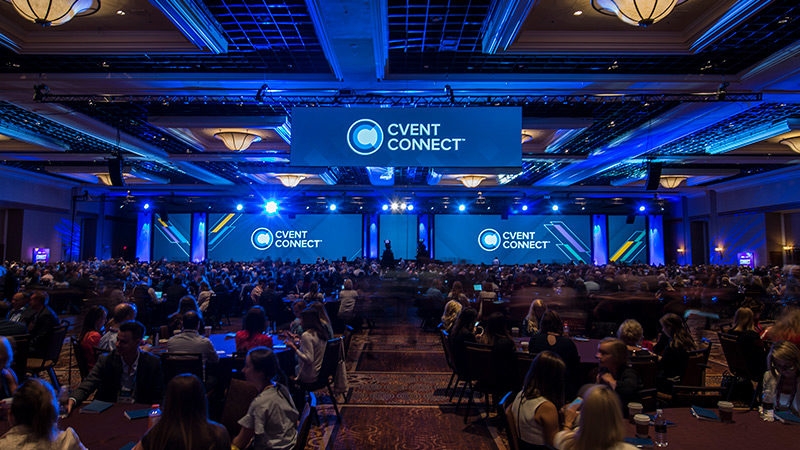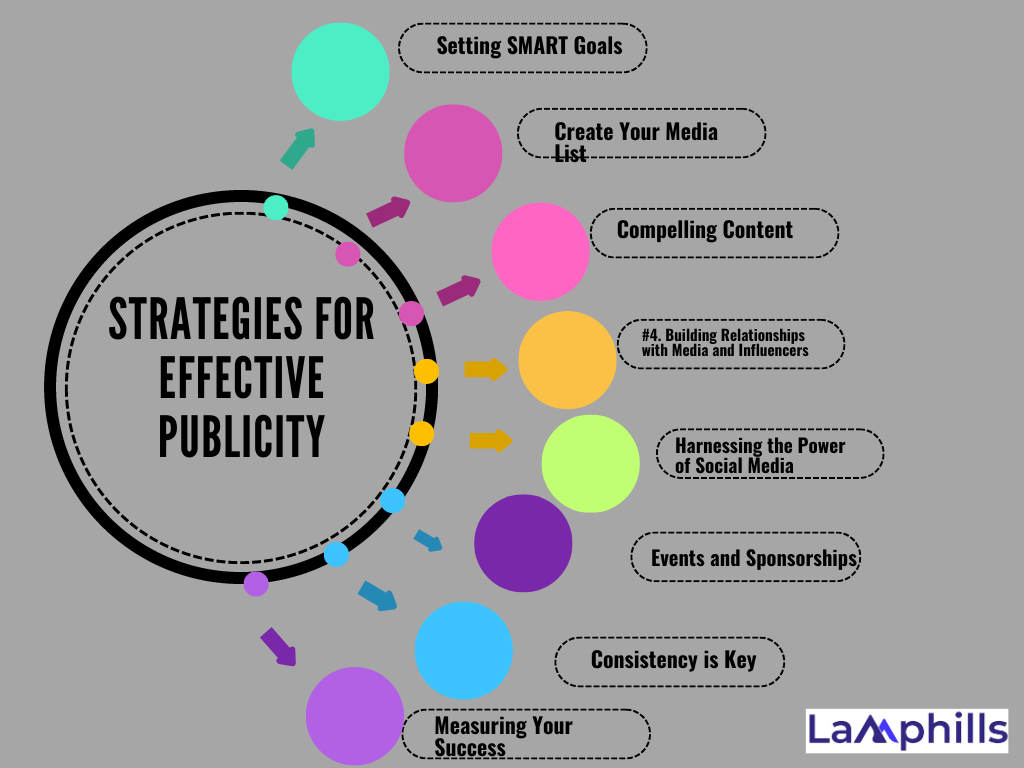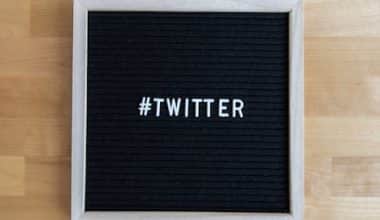Let’s start with a story. A few years ago, I was working with a small software company alongside the marketing team. We were trying to stand out in a crowded market. Of course, we had an excellent product, but so did everyone else. What we needed was real, authentic publicity that would get people talking.
Guess what? it’s easier said than done, right? How can you convince people to care about what you’re doing when there’s so much noise around? So we rolled our sleeves, dived in, and learned a lot about the power of publicity. And that’s exactly the purpose of this article, to share what we discovered with you.
Key Points
- Publicity isn’t just about getting your name out there; it’s about crafting a compelling story that resonates with your audience on a personal level. By sharing your brand’s story authentically, you can forge meaningful connections and stand out in a crowded marketplace.
- Explore a variety of publicity channels, from traditional media outlets to modern digital platforms, to maximize your reach and impact. Each channel has its strengths and advantages, so experiment with different approaches to see what works best for your brand.
- Don’t overlook the importance of measuring the success of your publicity efforts. Use metrics like website traffic, social media engagement, and brand sentiment to track your progress and make data-driven decisions to optimize your strategy.
- Case studies provide valuable insights into how other businesses have successfully leveraged publicity to achieve their goals. Study their strategies, adapt them to your context, and don’t be afraid to try new things.
- Building a strong public presence takes time and effort, so don’t get discouraged if you don’t see immediate results. Stay focused, stay consistent, and keep pushing forward—you never know when your next big break might come.
What is Publicity?
For me, publicity used to mean press releases and news conferences. You know, regular things. But it’s much more than that now. It is about telling a story that resonates with people. I discovered this the hard way while attempting to pitch the company to reporters. We’d send out press releases, hoping to gain some attention. But most of the time, we had radio silence. It was like shouting into the void.
So we decided to adjust our strategy. Instead of focusing exclusively on the product, I began delivering stories about our team—who we were, why we cared about what we were doing, and how our technology could benefit people. It was a complete game-changer. Suddenly, reporters became curious. They wanted to know more about us than just the technical details of our product.
I then understood the actual value of publicity. That is important to generate attention, curiosity, and credibility in addition to simply putting your name out there. For your brand, publicity is like a megaphone—it helps you reach a larger audience by amplifying your message.
Let’s just say that the importance of publicity lies in its potential to improve a company’s public reputation and credibility. People may be more willing to purchase the company’s goods or services as a result of the improved public perception of the company. Therefore, publicity can have a significant impact on a company’s performance.
Now in a more simple term “publicity” refers to raising public awareness of a company or individual. The ultimate purpose of publicity is to foster a positive public perception of a firm to entice more people to interact with it. Companies frequently employ publicity as part of a larger marketing plan. You can get publicity through media, which can include both classic news sources and emerging media such as blogs and podcasts.
Understanding Publicity

To completely understand publicity, we must return to its origins. The term “publicity” originated in the 18th century, taken from the French word “publicité.” It essentially means to make anything public. However, it is more than just disseminating knowledge; it is also about developing a narrative that people can connect with.
In today’s world, publicity has become a sophisticated discipline. Brands, individuals, and organizations use publicity to change perceptions, influence views, and motivate action. The ability to tell a captivating tale that matches the values and interests of the target audience is critical to successful publicity.
Currently, I must say that earned media is one of the most powerful sources of publicity. Earned media, as opposed to paid media, which involves the purchase of advertising space, results from real interest and coverage from outside sources. According to the Edelman Trust Barometer 2023, 63% of people trust earned media more than sponsored media. This trust element emphasizes the importance of developing genuine connections with journalists, influencers, and other essential stakeholders.
Take for instance, the viral success of Lil Nas X’s song “Old Town Road” is an excellent example of the power of earned publicity. The song found traction on social media platforms such as TikTok, where users generated thousands of videos featuring the tune. This organic exposure drew enormous media attention, catapulting the song to the top of the Billboard Hot 100 for a record-breaking 19 weeks. The lesson here is that genuine engagement and ingenuity can result in exceptional publicity outcomes.
Publicity is not always about good news. Sometimes it’s about dealing with problems and repairing reputations. Effective crisis communication is an important component of a strong public relations strategy and of course, this is where I was needed mostly in our company as a crisis manager that I am. According to a PwC survey from 2022, 69% of corporate leaders have encountered a crisis in the previous five years, with reputational loss being the most typical outcome.
How Does Publicity Work?
Typically, companies hire publicists to create and maintain positive press for their product, service, company, or celebrity by influencing news outlets to cover it.
Publicists find noteworthy aspects of products and services, such as remarks, speeches, interviews, or charitable endeavors carried out by brand ambassadors, reps, or spokespeople, and they submit these to potential media sources for consideration.
Brands do not have to purchase advertising time or space to gain publicity but they do need to work hard. Publicists use multiple ways to generate news stories about the brand. These are:
- Press release: A press release is a short, compelling story written in a specific format to inform local media outlets about newsworthy events or business information. It could be related to general news, launch releases, events, new products, or expert positions of a brand on a particular matter.
- Networks: Public relations specialists and publicists develop media personnel relations to increase their brand’s media coverage.
- Digital Media: Brands also use digital marketing strategies like social media marketing to get the attention of the target audience and media outlets.
- Connect with members of the media. Form relationships with media members who cover your industry so you know you can approach them with important updates.
- Offer free products to influencers. Influencer publicity is strong because an influencer’s audience trusts their opinion on products and services.
- Announce promotions. Share promotions announcements with your email list or on your social media accounts to get people excited about what you’re offering.
- Collaborate with other companies. Seek out other companies with complementary products, and ask if they’d be open to collaborating on a new product or an enhancement to an existing item.
Why Publicity Matters More Than You Think
To be honest, there are moments when advertising seems like shouting into thin air. Every day, messages are thrown at people, and it’s simple to become lost in the noise. However, publicity? That is not the same. It’s similar to a reliable friend endorsing a product they truly believe in. Here’s why publicity matters:
#1. Brand Awareness
A mention on a well-liked podcast or a well-placed piece in an industry newspaper might introduce your business to a completely new audience that you might not have otherwise been able to reach. Did you know that individuals are four times more inclined to trust and follow suggestions from friends and family than from traditional advertising, according to a Nielsen study? This is why publicity capitalizes on the influence of referrals and trust.
#2. Credibility
Having your company included in a reputable media platform gives you immediate credibility. This is because consumers have trust in the opinions of magazines and influencers, and this trust can be extended to your brand. Imagine the difference between someone seeing your ad for a new cleaning product and reading a glowing review from a respected cleaning blog – which one would make you more likely to try it?
#3. Customer Confidence
Compared to advertising, earned media has a more genuine feeling. People are more inclined to think about your good or service since they perceive it as an unbiased endorsement. Think of it this way: Which would make you more inclined to download a new fitness app—a glitzy advertisement or a review from your favorite fitness influencer?
#4. Cost-Effectiveness
Publicity can reach your target demographic for a lot less money than traditional advertising does. Why? because budgets for advertising can be limited, especially for small firms. Also, using publicity saves a lot of money by letting you make use of the power and reach of media outlets.
Types of Publicity
A neighborhood coffee shop I often visit is one of my favorite instances of well-executed publicity. They’ve perfected the art of social media, routinely sharing mouthwatering pictures of their drinks and interacting with followers on the platform. As a result, they’ve gained a devoted following, and local coffee enthusiasts now know where to go. We now know why publicity is so crucial, so let’s examine the various methods via which it can be attained.
#1. News Outlets

Make a pitch to media organizations about your business and ask to be included in a segment. Then give a more detailed explanation of the goods and services you provide and how they meet market needs, or provide details on the charitable contributions your business makes.
#2. Skilled Presenter

Seek out opportunities to provide expert speeches at conferences and on podcasts, or offer your professional viewpoint as a quote for a news item.
#3. Events

Media and other information outlets heavily publicize events that feature influencers, industry experts, and other noteworthy people or those that stand out from the crowd.
This can be events for a charity or something fun on the local level. When media outlets cover the event, it’ll be your hope that they mention your company as a participant or sponsor.
#4. Partnerships

Partnerships increase a company’s publicity horizon as it gets free publicity whenever the partner gets attention. Moreover, partnerships attract eyeballs of investors, financial analysts, and other enthusiasts.
#5. Press Releases

Image by Racool_studio on Freepik
These are newsworthy announcements you send to journalists and media outlets in hopes of securing coverage. Think of them as attention-grabbing invitations to tell your story.
#6. Influencer Marketing

Partnering with social media influencers who have a loyal following in your target market. Influencers can act as brand advocates, promoting your products or services to their audience.
#7. Social Media Engagement
Actively connecting with your audience on social media platforms can create attention and brand you as a thought leader in your field. Social media is an effective tool for spreading your message and initiating interactions.
Furthermore, keep in mind that each kind of publicity channel has advantages and downsides, so select the ones that are most appropriate for your target audience and business objectives. For example, if you want to reach a large audience, getting coverage in a popular newspaper or online magazine may be the best option. On the other hand, if your target group spends the majority of their time on social media, investing in influencer partnerships or launching tailored ad campaigns may produce better results.
#8. Local Publicity
The importance of local coverage is an often underestimated part of publicity. While many brands strive for national or worldwide recognition, local media may be quite helpful in fostering grassroots support. According to a 2022 Nielsen survey, local news is still one of many people’s most trusted sources of information.
Begin by researching local newspapers, radio stations, and community events. By establishing a strong local presence, who knows you may cultivate a loyal audience that will help you amplify your message as you grow.
Publicity: Choosing the Right Channel
Choosing the publicity channel for your message and target audience is critical to successful publicity. Consider the following breakdown to help you make an informed decision:
#1. Understanding Your Audience
Take a step back and think of your ideal client before you begin sending press releases to every media you can find. Who do you want to contact with? What media sources do they normally consume?
- Age: Younger audiences are more likely to get their news online and through social media, while older demographics might still rely on traditional media like newspapers and TV.
- Interests: Is your target audience into sports? Look for sports publications and podcasts. Are they foodies? Food blogs and cooking shows might be a better fit.
- Online Behavior: Do your ideal customers spend most of their time on Facebook or Twitter? Understanding their preferred social media platforms is crucial for targeted outreach.
#2. Matching Your Message to the Channel
Once you understand your audience, analyze the strengths and limits of each publicity channel:
- Traditional media is ideal for reaching a large audience, particularly for established magazines with significant readerships. However, getting featured might be competitive, and the lead time may be longer.
- Digital Media: Provides greater flexibility and allows for focused outreach. Blogs and online publications can be more specialized, allowing you to reach a targeted audience.
- Influencer Marketing: This can be extremely effective if you work with the proper influencer who speaks to your target demographic. However, influencer marketing may be expensive, and the outcomes vary depending on the influencer’s reach and involvement.
- Social Media Engagement: A fantastic way to build brand awareness and connect directly with your audience. However, it requires consistent effort and a well-defined social media strategy.
#3. Develop a Compelling Brand Story
What distinguishes your company from others? What makes your product or service important to people? Create a story that appeals to your target market and makes them feel an emotional connection to your business.
#4. Improve Your Messages
What is the most important thing you want consumers to take away from your brand? Put your attention on communicating your value proposition in a clear, succinct manner. You can think of your brand story as the “who” and the “why,” and your messaging as the “what.” Both are essential for developing an engaging story that will draw in the media.
#5. Finding the Media Partners You Need
Find Influencers & Related Publications to Target: If you sell accounting software, don’t waste time pitching your story to a fashion magazine. Look for journals and influencers in your field of expertise.
Additionally, don’t be scared to try out various media outlets to discover what connects with your audience. The secret is to be methodical, monitor your progress, and modify your strategy as necessary.
Strategies for Effective Publicity
One tactic that has shown to be very successful is making use of storytelling’s power. Because stories stimulate strong emotional responses in people, incorporating your brand’s story into your publicity campaigns can help you establish genuine connections with your target audience. Don’t be hesitant to highlight your company’s goals and values, share personal tales, and reveal the human aspect of your business.
For example, my sister realized that only promoting the environmental benefits of her products would not be enough to draw in customers when she launched her eco-friendly clothing company. Rather, she concentrated on telling the tale of her company, including how she came to be enthusiastic about sustainability, the difficulties she encountered in finding eco-friendly materials, and the difference she wished to see in the world. By framing her publicity efforts around this narrative, she was able to attract a loyal following of customers who shared her values and beliefs.
Strategies for Effective Publicity: Step By Step

It’s time to create a successful publicity strategy now that you’ve determined who your target market is and which media outlets to use. Now it’s time to share with you the effective strategies I and the marketing explored then,
#1. Setting SMART Goals
Before you get started, set specific goals for your publicity campaign. Don’t just say “Increase brand awareness.” Make your goals SMART (specific, measurable, attainable, relevant, and time-bound). An excellent publicity goal can be something like: “Increase website traffic by 20% within the next quarter through targeted media placements.”
#2. Create Your Media List
Remember the channels and influencers you mentioned earlier? It’s time to build a complete media list. This should include the contact information for journalists, editors, and social media influencers who may be interested in your story.
#3. Crafting Compelling Content
We understood early on that our product’s technical specifications were insufficient to gain attention. They were spectacular, but they made no emotional connection with the audience. To stand out from the crowd, we needed a compelling story. So we looked at our journey—how the founders met, the challenges we faced, and the enthusiasm that motivated us to create something special.
We discovered that when we exposed the human side of our startup, people started to listen. Journalists are interested not only in the product but also in the people who make it. How do you distinguish yourself? Why should anyone bother? Answering these questions was the first step in getting our story out there.
In essence, publicity isn’t just about getting your name out there; it’s about telling a compelling story that captures people’s attention. Here’s what you need to focus on:
- Newsworthy Angle: What makes your company notable? Do you have a unique product launch, an intriguing company history, or an innovative strategy to share? Find that newsworthy hook and create your story around it.
- Value Proposition: What problem does your product or service address for your customers? How does it improve their lives? Concentrate on highlighting the value proposition that resonates with your target audience.
- Credibility and Expertise: Establish yourself as a thought leader in your sector. Provide intelligent commentary, give useful statistics, and demonstrate your knowledge in your work.
- Personalize Your Approach: Do not send generic pitches. Take the time to investigate the journalist or influencer and customize your message to their particular interests.
- Offer Value: What can you provide the journalist besides a story? Are you available for an interview? Can you offer exclusive data or insights?
#4. Building Relationships with Media and Influencers
The next challenge was to get our story in front of the right individuals. We began with press releases, distributing them to every journalist we could think of. But no one responded. That’s when we discovered we were doing it the wrong way.
Instead of putting out blanket news releases, we started developing connections with journalists. I remember one reporter who covered technology companies for a prominent publication. I followed her on Twitter, commented on her articles, and emailed her about a story she published that I found interesting. We began a chat, and she soon inquired about our startup. The personal connection made all the difference.
Every day, pitches are sent to influencers and journalists in large quantities. How do you differentiate yours? By establishing sincere connections: but
- Investigate: Avoid sending out generic proposals. Spend some time getting to know the influencer or journalist so that you can customize your message to their audience and areas of interest.
- Offer Benefits: What more than a narrative about your company can you provide them? Could you provide insightful analysis for a future piece? Could you offer unique information or analysis?
- Be persistent (without being intrusive): Follow up on your pitches, but do it courteously and appropriately. Being persistent demonstrates your sincere desire to share your story.
#5. Utilizing the Power of Social Media
Social media became an important component of our publicity strategy. We had a limited marketing budget, so we had to be inventive. We began by releasing behind-the-scenes content, such as images of our team at work, films of product prototypes, and anecdotes about our journey. It provided folks insight into our world and made us more relatable.
But we did not stop there. We approached micro-influencers, who have a small but highly engaged following. We asked if they’d want to try our product, and several of them agreed. The buzz they generated on social media was phenomenal. It wasn’t just about earning likes and shares; it was about creating a community of individuals who supported what we were doing.
#6. Maximizing Your Impact: Consistency is Key
One of the most essential lessons we learned was the importance of consistency in message. Early on, we had different people talking about our company, and the messaging wasn’t always consistent. It caused misunderstanding and diluted our brand. We needed everybody on the same page.
We created a clear story for our company, outlining who we were, what we stood for, and what we aimed to achieve. This tale became the cornerstone for all of our public relations activities. Whether it was a press release, a social media post, or an interview with a journalist, we ensured that our message was constant. It gave our brand a more cohesive appearance and helped us gain credibility. Here’s how to ensure your efforts have a lasting impact:
- Maintain Consistent Messaging: Across all your publicity channels, ensure your brand messaging remains consistent and clear. This way, people will easily recognize and remember your brand.
- Monitor Media Coverage: Keep track of where you’re being mentioned online and in traditional media. This will help you identify trends and adjust your approach as needed.
- Respond Promptly: If you receive feedback or inquiries from media outlets or customers, be sure to respond promptly and professionally. This shows you value their time and feedback.
#7. Events and Sponsorships
Participating in industry events or sponsoring relevant conferences can be a great way to generate publicity. Here’s how:
- Network with Media and Influencers: Industry events offer a fantastic opportunity to connect with journalists, bloggers, and influencers in person.
- Position Yourself as an Industry Leader: Speaking engagements or panel discussions at events can help establish you as a thought leader in your field.
- Generate Buzz: Sponsorships can be a great way to get your brand in front of a targeted audience. Think about sponsoring industry awards or events that align with your brand values.
#8. Measuring Your Success: Tracking What Matters
For example, despite having an innovative product, my cousin failed to gain media attention when he first began his IT firm. However, by meticulously watching and evaluating his publicity efforts, he learned that certain sorts of content were more popular with journalists and influencers than others. Armed with this information, he was able to modify his tactics and finally gain attention in numerous high-profile magazines, increasing website traffic and consumer inquiries.
Similarly, no publicity strategy is complete without a mechanism to assess its effectiveness. After all, what good is publicity if you can’t measure its effectiveness? Hence, several major criteria can be used to assess the efficacy of your public relations initiatives, including
- Media Impressions: The number of times your brand is mentioned across different media channels. This gives you a sense of your overall reach.
- Website Traffic: Did your publicity efforts lead to an increase in website traffic? This shows you if people are taking action after learning about your brand.
- Social Media Engagement: Track metrics like likes, shares, comments, and mentions on social media. This indicates how your audience is interacting with your content.
- Brand Sentiment: Are people saying positive things about your brand online? Social listening tools can help you track brand sentiment and identify areas for improvement.
Remember, publicity is more than simply vanity metrics like media mentions. It’s important to understand how your efforts translate into greater brand awareness, website traffic, and, eventually, sales.
Case Studies
To bring these ideas to life, consider these few real-world examples of businesses that have successfully used publicity to achieve their objectives.
Case Study #1: Laura’s Sustainable Skincare Brand
Laura’s passion for natural skincare inspired her to establish her brand of organic beauty products. By collaborating with eco-conscious influencers and describing her experience on social media, she was able to generate awareness for her brand and establish a dedicated following of ecologically concerned customers.
Case Study #2: The Sole MatesShoe Company with a Viral Story
Sole Mates is a sustainable shoe brand dedicated to using environmentally friendly materials. Their only problem was to raise brand awareness and compete with established footwear firms. After much deliberation, they devised a plan to collaborate with a sustainability influencer to create a limited-edition shoe collection made from recycled plastic bottles. They then released a press statement emphasizing the relationship and the company’s dedication to sustainability.
The results? Several environmentally-minded publications and blogs picked up on the press announcement. The influencer’s social media promotion generated a lot of attention, which resulted in increased website traffic and sales of the limited-edition collection. In the end, Sole Mates successfully positioned themselves as a leader in sustainable footwear and gained valuable exposure within their target audience.
Case Study 3: Local Bakery That Became a Social Media Sensation
The Knead to Bake, a family-run bakery, specializes in handmade breads. They faced the problem of recruiting new clients and standing out in a congested market. After a time, they devised a strategy: The Knead to Bake launched an Instagram account to showcase their lovely, handcrafted breads. They held a contest, urging bakers to showcase their creations using the hashtag #KneadtoBake.
As a result, the visually appealing Instagram feed and intriguing contest drew a loyal following. Local food bloggers and publications followed up on the story, resulting in good feedback and features. As a result, the Knead to Bake had considerable growth in foot traffic and online orders, cementing its reputation as a popular neighborhood bakery.
Best Practices and Common Pitfalls: The Do’s and Don’ts of Publicity
Thanks to the marketing honestly, because if not for their guidance, our publicity would have been a tragedy. So, be careful enough to avoid these common pitfalls during your publicity,
#1. Overpromising and Underdelivering
Do not promise a journalist a Nobel Prize-winning story. Concentrate on delivering on your promises, whether it’s an informative interview or access to exclusive information.
#2. Failure to Follow Up
Persistence is critical. Follow up on your pitches politely and professionally.
#3. Poor Response to Negative Publicity
Even the most successful brands encounter criticism from time to time. The objective is to answer promptly, openly, and professionally.
Although publicity is a strong tool, it must be used strategically. Here are some best practices to consider:
- Be Authentic and Transparent: People can detect insincerity a mile away. Concentrate on conveying your authentic narrative and skills.
- Provide Value, Not Just Expectations: Journalists and influencers seek valuable content, not self-promotion. Provide valuable insights, statistics, or unique perspectives to their audience.
- Build Trust with Consistent Communication: Do not disappear after receiving one piece of coverage. Keep in touch with media and influencers, and keep them informed about your brand’s journey.
What is the difference between Publicity vs. marketing
Publicity is often included in marketing strategies, but there are a few differences between publicity and marketing. Here are some key differences to consider:
#1. Costs
One major difference between publicity and marketing is the costs involved. Typically, publicity is free, while marketing often comes with expenses.
#2. Audience
The intended audience for publicists is usually the general public, as the goal of publicity is to increase a client’s public awareness. However, marketers typically hone in on a client’s targeted audience.
#3. Message
Another difference between publicity and marketing is the message you present to the public. Typically, publicity simply aims to make an audience aware of the existence of a company or product. Marketing, in comparison, usually has a specific message, such as how a product can help consumers.
How do you create publicity?
You can generate publicity by clarifying your company’s selling points. Hire a public relations expert to draft a one-page news release to pique media interest in your company. Hosting a workshop, distributing promotions, or visiting trade exhibitions will help you and your firm get in front of the audience.
What is the main objective of publicity?
The main objective of publicity is to build awareness for your brand and what your company stands for and sells. The goal is to increase visibility so your ideal customer will want to become a buyer.
What is a publicity strategy?
A publicity strategy is a plan for communicating with the public about your company and associated offerings. A strategy accounts for your goals and how your company is unique then develops a story that can appeal to your ideal customer.
Conclusion
If there’s one thing I’ve learned, it’s that publicity revolves around relationships. You must establish long-term relationships with journalists, influencers, and customers alike. I used to view publicity as a one-time event—get the story out and you’re done. But it’s more like an endurance race.
But, publicity is more than just generating awareness; it’s about telling a story that people care about. It’s about trust, connections, and authenticity. Whether you’re looking to gain attention, manage a crisis, or grow, remember that it’s all about the people behind the headlines. The more you can relate to them on a personal level, the more successful you will be. As a result, you can create an all-encompassing publicity strategy that yields long-term benefits by implementing the strategies described in this guide.
References
- indeed.com
- feedough.com
- spellbrand.com






